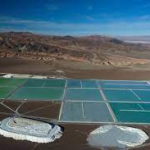 Geopolitical risks and tensions between the U.S. and China pose a threat to the global lithium supply chain, according to a new report from Fitch Solutions Country Risk & Industry Research.
Geopolitical risks and tensions between the U.S. and China pose a threat to the global lithium supply chain, according to a new report from Fitch Solutions Country Risk & Industry Research.
Increasingly tense relations between the U.S. (a rising battery producer and a key end market for electric vehicles) and China (a dominant player in lithium processing and current battery producer) are the main issues raising risks about supply chain resilience.
The ongoing de-globalization trend and increasing efforts to localize supply chains to some extent will allow governments to increase local supply of raw materials (e.g., lithium production in the EU and US) or promote long-term supply agreements.
As a result, the entire production landscape of the EV battery value chain, from lithium mining to battery production and EV manufacturing, is expected to change in the coming years as developed markets aim to reduce their dependence on China.
In any case, the growing rivalry between China and the U.S. (and their allies or areas of influence) poses growing and significant risks for the lithium industry, as it could disrupt demand and trade flows when tensions rise.
In this context, some market players are anticipating such as BMW, which has signed a long-term supply agreement with US-based Livent.
A key growing theme in the lithium sector, as well as for broader green and technology transition materials such as cobalt, nickel, and copper, is that of strategic sourcing, access, and the increasing politicization of the battery supply chain.
Between increased investment in battery materials and a positive price outlook, the lithium sector is already experiencing increasing government intervention and resource nationalism, which is likely to increase further, either to secure this strategic material, increase local production, or benefit from strong fundamentals by increasing taxes or control over the sector.
Government intervention in the lithium sector will take several forms, such as increased official support for battery material production through the development of supporting industry frameworks. This has already begun in the EU, which has its European Raw Materials Alliance launched in 2020, as well as in Australia, the United States, Canada, and China.
The competitive search for “clean” sources of lithium should also lead to a race by battery/EV manufacturers and even their governments to access the most sustainable raw material. This, in turn, should limit the risks of “oversupply.”
Efficient sourcing of sustainable lithium takes considerable time for research and development, as well as requiring higher costs, such as reducing the water intensity of operations. Perceptions of overdevelopment in the present are also unlikely to cause an oversupply of lithium in the near term, since mine development times, as with any other mineral, involve several years from conception to operation.
Expectations are for lithium consumption growth to exceed current supply developments. Demand will be stimulated by strong government support in major economies to promote electric vehicles and large-scale energy storage systems.
.gif) Loading
Loading

